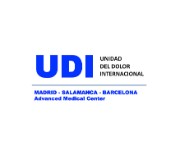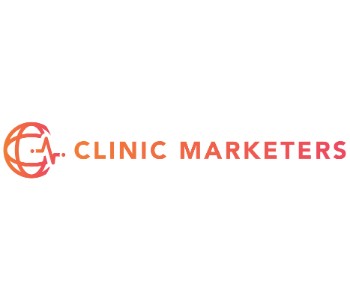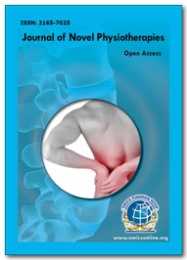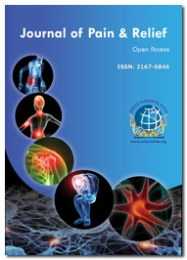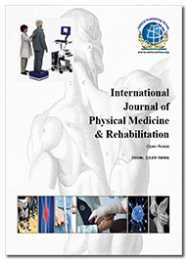Theme: Relieving Pain. Restoring Function. Renewing Hope.
Pain Medicine 2017
Track 1: Pain Management and Rehabilitation
The specialty of Pain Medicine, or Algiatry, is a discipline within the field of medicine that is concerned with the prevention of pain, and the evaluation, treatment, and rehabilitation of persons in pain. The typical pain management team includes medical practitioners, Pharmacists, Clinical Psychologist, occupational therapists, physician assistant, nurse practitioners and clinical nurse specialists. Pain can be managed using pharmacological or interventional procedures by using pain reliefs. There are many interventional procedures typically used for chronic back pain include epidural steroid injections, facet joint Injections, neurolytic blocks, spinal cord stimulators and intrathecal drug delivery system implants. The Management goals when treating back pain are to achieve maximal reduction in pain intensity as rapidly as possible, to restore the individual’s ability to function in everyday activities, to help the patient cope with residual pain, to assess for side effects of therapy, and to facilitate the patient’s passage through the legal and socioeconomic impediments to recovery. For many the goal is to keep the pain to a manageable level to progress with rehabilitation, which can then lead to long term pain relief. Also, for some people the goal is to use non-surgical therapies to manage the pain and avoid major surgery, while for others surgery may be the quickest way to feel better. Migraines typically present with self-limited, recurrent severe headache associated with autonomic symptoms. About 15-30% of people with migraines experience migraines with an aura. And those who have migraines with aura also frequently have migraines without aura. There are four possible phases of Headache: The prodrome, which occur hours or days before the headache, The aura, which immediately precedes the headache, The pain phase also known as headache phase, The postdrome, the effects experienced following the end of a migraine attack.
Related Conferences of Pain Management and Rehabilitation:
5th International Conference and Exhibition on Pharmacology and Ethnopharmacology, March 23-25, 2017 Orlando, USA; International Conference on Biotech Pharmaceuticals, October 23-25, 2017 Paris, France; 10th International Conferences on Immunopharmacology and Immunotoxicology, November 20-22, 2017 Melbourne, Australia; 6th Global Experts Meeting on Cardiovascular Pharmacology and Cardiac Medications, April 13-14, 2017 Dubai, UAE; 3rd International Conference on Biopharmaceutics and Biologic Drugs, June 19-21, 2017 Philadelphia, USA; 9th Annual Congress on Drug Formulation & Drug Design, October 19-21, 2017 Seoul, South Korea.
Track 2: NSAIDs & Analgesics
Nonsteroidal anti-inflammatory drugs are a drug class that groups together drugs that provide analgesic (pain-killing) and antipyretic (fever-reducing) effects, and, in higher doses, anti-inflammatory effects. The term nonsteroidal distinguishes these drugs from steroids, which, among a broad range of other effects, have a similar eicosanoid-depressing, anti-inflammatory action. First used in 1960, the term served to distance new drugs from steroid related iatrogenic tragedies. The most prominent members of this group of drugs, aspirin, ibuprofen and naproxen, are all available over the counter in most countries. Paracetamol (acetaminophen) is generally not considered an NSAID because it has only little anti-inflammatory activity. It treats pain mainly by blocking COX-2 mostly in the central nervous system, but not much in the rest of the body. Most NSAIDs inhibit the activity of cyclooxygenase-1 (COX-1) and cyclooxygenase-2 (COX-2), and thereby, the synthesis of prostaglandins and thromboxanes. It is thought that inhibiting COX-2 leads to the anti-inflammatory, analgesic and antipyretic effects and that those NSAIDs also inhibiting COX-1, particularly aspirin, may cause gastrointestinal bleeding and ulcers.
An analgesic or painkiller is any member of the group of drugs used to achieve analgesia, relief from pain. Analgesic drugs act in various ways on the peripheral and central nervous systems. They are distinct from anesthetics, which temporarily affect, and in some instances completely eliminate, sensation. Analgesics include paracetamol (known in North America as acetaminophen or simply APAP), the non-steroidal anti-inflammatory drugs (NSAIDs) such as the salicylates, and opioid drugs such as morphine and oxycodone. In choosing analgesics, the severity and response to other medication determines the choice of agent; the World Health Organization (WHO) pain ladder specifies mild analgesics as its first step. Analgesic choice is also determined by the type of pain: For neuropathic pain, traditional analgesics are less effective, and there is often benefit from classes of drugs that are not normally considered analgesics, such as tricyclic antidepressants and anticonvulsants.
Related Conferences of Classification of Pain Relief Analgesics:
5th International Conference and Exhibition on Pharmacology and Ethnopharmacology, March 23-25, 2017 Orlando, USA; International Conference on Biotech Pharmaceuticals, October 23-25, 2017 Paris, France; 10th International Conferences on Immunopharmacology and Immunotoxicology, November 20-22, 2017 Melbourne, Australia; 6th Global Experts Meeting on Cardiovascular Pharmacology and Cardiac Medications, April 13-14, 2017 Dubai, UAE; 3rd International Conference on Biopharmaceutics and Biologic Drugs, June 19-21, 2017 Philadelphia, USA; 9th Annual Congress on Drug Formulation & Drug Design, October 19-21, 2017 Seoul, South Korea.
Track 3: Physical and Physiological Approaches in Pain Medicine
Pain medicine and rehabilitation employs numerous physical techniques like thermal agents and electrotherapy, such as therapeutic exercise and behavioral medical care, traditional pharmacotherapy to treat pain, sometimes as a district of knowledge domain or multidisciplinary program Transcutaneous electrical nerve stimulation has been found to be ineffective for lower back pain, but it would facilitate with diabetic neuropathy. Acupuncture involves the insertion and manipulation of needles into specific points on the body to alleviate pain or for therapeutic functions. Research has not found proof that light therapy like low level optical device medical care is a good medical care for pain relief Cognitive behavioral Therapy (CBT) for pain helps patients with pain to know the link between one's physiology (e.g., pain and muscle tension), thoughts, emotions, and behaviors. A meta-analysis of studies that used techniques targeted around the thought of mindfulness, concluded, "Findings counsel that MBIs decrease the intensity of pain for chronic pain patients." Occupational therapists could use a range of interventions as well as training program, relaxation, goal setting, drawback determination, planning, and carry this out at intervals each cluster and individual settings. Therapists may go at intervals a clinic setting, or within the community as well as the work, school, home and health care centers. Activity therapists could assess activity performance before and when intervention, as a live of effectiveness and reduction in disability.
Related Conferences of Physical and Physiological Approaches in Pain Medicine:
5th International Conference and Exhibition on Pharmacology and Ethnopharmacology, March 23-25, 2017 Orlando, USA; International Conference on Biotech Pharmaceuticals, October 23-25, 2017 Paris, France; 10th International Conferences on Immunopharmacology and Immunotoxicology, November 20-22, 2017 Melbourne, Australia; 6th Global Experts Meeting on Cardiovascular Pharmacology and Cardiac Medications, April 13-14, 2017 Dubai, UAE; 3rd International Conference on Biopharmaceutics and Biologic Drugs, June 19-21, 2017 Philadelphia, USA; 9th Annual Congress on Drug Formulation & Drug Design, October 19-21, 2017 Seoul, South Korea.
Track 4: Anesthesia as Pain Drug
In the practice of medicine (especially surgery) and dentistry, anesthesia is a temporary induced state with one or more of analgesia (relief from or prevention of pain), paralysis (muscle relaxation), amnesia (loss of memory), and unconsciousness. A patient under the effects of anesthetic drugs is referred to as being anesthetized. Anesthesia is freedom from pain. Each year, millions of people in the United States undergo some form of medical treatment requiring anesthesia. Anesthesia, in the hands of qualified professionals like Certified Registered Nurse Anesthetists (CRNAs), is a safe and effective means of alleviating pain during nearly every type of medical procedure. Anesthesia care is not confined to surgery alone. The process also refers to activities that take place both before and after an anesthetic is given. In the majority of cases, anesthesia is administered by a CRNA. CRNAs work with your surgeon, dentist or podiatrist, and may work with an anesthesiologist (physician anesthetist). CRNAs are advanced practice registered nurses with specialized graduate-level education in anesthesiology. For more than 150 years, nurse anesthetists have been administering anesthesia in all types of surgical cases, using all anesthetic techniques and practicing in every setting in which anesthesia is administered. Anesthesia enables the painless performance of medical procedures that would cause severe or intolerable pain to an un-anesthetized patient.
Related Conferences of Anesthesia:
5th International Conference and Exhibition on Pharmacology and Ethnopharmacology, March 23-25, 2017 Orlando, USA; International Conference on Biotech Pharmaceuticals, October 23-25, 2017 Paris, France; 10th International Conferences on Immunopharmacology and Immunotoxicology, November 20-22, 2017 Melbourne, Australia; 6th Global Experts Meeting on Cardiovascular Pharmacology and Cardiac Medications, April 13-14, 2017 Dubai, UAE; 3rd International Conference on Biopharmaceutics and Biologic Drugs, June 19-21, 2017 Philadelphia, USA; 9th Annual Congress on Drug Formulation & Drug Design, October 19-21, 2017 Seoul, South Korea.
Track 5: Pain Syndrome
Carpal tunnel syndrome (CTS) may be a medical condition within which the median nerve is compressed because it travels through the carpus at the carpal tunnel and causes pain, symptom and tingling, within a part of the hand that receives sensation from the median nerve. Piriformis syndrome may be a neuromuscular disorder that happens once the Sciatic nerve is compressed or otherwise irritated by the piriformis muscle inflicting pain, tingling and symptom within the buttocks and on the trail of the nerve descending the lower thigh and into the leg. Complex regional pain syndrome (CRPS) it's a chronic general un-wellness characterized by severe pain, swelling, and changes within the skin. CRPS usually worsens over time. it's going to at the start associate effect on} an arm or leg and unfold throughout the body; thirty fifth of individuals report symptoms throughout their whole body. Alternative potential effects include: general involuntary dysregulation; animal tissue edema; system, endocrine, or medical specialty manifestations; and changes in urological or gi operate. Central pain syndrome may be a neurologic condition caused by injury or malfunction within the Central system (CNS) that causes a sensitization of the pain system. The extent of pain and also the area unit as affected are associated with the reason behind the injury. Compartment syndrome is augmented pressure inside one in all the body's compartments that contains muscles and nerves. Compartment syndrome most typically happens in compartments within the leg or arm. There are unit 2 main sorts of compartment syndrome: acute and chronic. Fibromyalgia (FM) may be a medical condition characterized by chronic widespread pain and a heightened and painful response to pressure. Symptoms apart from pain might occur, resulting in the utilization of the term Fibromyalgia syndrome (FMS). Alternative symptoms embrace feeling tired to a degree that ordinary activities area unit affected, sleep disturbance, and joint stiffness. Some folks additionally report problem with swallowing bowl and bladder abnormalities.
Related Conferences of Pain Syndrome:
5th International Conference and Exhibition on Pharmacology and Ethnopharmacology, March 23-25, 2017 Orlando, USA; International Conference on Biotech Pharmaceuticals, October 23-25, 2017 Paris, France; 10th International Conferences on Immunopharmacology and Immunotoxicology, November 20-22, 2017 Melbourne, Australia; 6th Global Experts Meeting on Cardiovascular Pharmacology and Cardiac Medications, April 13-14, 2017 Dubai, UAE; 3rd International Conference on Biopharmaceutics and Biologic Drugs, June 19-21, 2017 Philadelphia, USA; 9th Annual Congress on Drug Formulation & Drug Design, October 19-21, 2017 Seoul, South Korea.
Track 6: Pharmacological Approaches for Pain
There are several pharmacological interventions that may be accustomed manage pain in arthritis. However, in choosing the acceptable approach, the practitioner must take into account to consider the efficacy. Adverse side effects, dosing frequency, patient preference, and cost in choosing medication for pain management. When a patient develops the primary signs of an inflammatory arthritis, the most priority is symptom relief, with pain being the cardinal sign of inflammation that patients most wish facilitate with. However, it has become more and more clear that for inflammatory arthropathies like RA merely treating the symptoms with non- Steroidal anti- inflammatory drugs (NSAIDs) or analgesics in adequate, because features of the disease that lead to damage to the joints, and then to disability will carry on uncheck. In addition to symptoms –relieving drugs, patients also need disease-modifying pain drugs that have been demonstrated to slow down or stop the damaging aspects of disease There are two aims in the pharmacological treatment; firstly to reduce inflammation or modulate the auto immune response and secondly to modulate the pain response. Medications is thought-about in 5 classes: simple analgesics, non-steroidal anti-inflammatory drugs (NSAIDs), Disease modifying anti-rheumatic-drugs (DMARD’S), Steroids, Biologics and other relevant Adjuvant analgesics (ex. antiepileptic and antidepressants used for pain relief).
Related Conferences of Physical and Physiological Approaches in Pain Medicine:
5th International Conference and Exhibition on Pharmacology and Ethnopharmacology, March 23-25, 2017 Orlando, USA; International Conference on Biotech Pharmaceuticals, October 23-25, 2017 Paris, France; 10th International Conferences on Immunopharmacology and Immunotoxicology, November 20-22, 2017 Melbourne, Australia; 6th Global Experts Meeting on Cardiovascular Pharmacology and Cardiac Medications, April 13-14, 2017 Dubai, UAE; 3rd International Conference on Biopharmaceutics and Biologic Drugs, June 19-21, 2017 Philadelphia, USA; 9th Annual Congress on Drug Formulation & Drug Design, October 19-21, 2017 Seoul, South Korea.
Track 7: Pain Management Specialist
To a certain extent, medical practitioners have always been specialized. Specialization was common among Roman physicians. The particular system of modern medical specialties evolved gradually during the 19th century. Informal social recognition of medical specialization evolved before the formal legal system. The particular subdivision of the practice of medicine into various specialties varies from country to country, and is somewhat arbitrary. Currently, there is no single field of medicine or health care that represents the preferred approach to pain management. Indeed, the premise of pain management is that a highly multidisciplinary approach is essential. Pain management specialists are most commonly found in the following disciplines: Physiatry (also called Physical medicine and rehabilitation), Anesthesiology, Interventional radiology, Physical therapy. Specialists in psychology, psychiatry, behavioral science, and other areas may also play an important role in a comprehensive pain management program. Selection of the most appropriate type of health professional - or team of health professionals - largely depends on the patient's symptoms and the length of time the symptoms have been present.
Related Conferences of Pain Management Specialist:
5th International Conference and Exhibition on Pharmacology and Ethnopharmacology, March 23-25, 2017 Orlando, USA; International Conference on Biotech Pharmaceuticals, October 23-25, 2017 Paris, France; 10th International Conferences on Immunopharmacology and Immunotoxicology, November 20-22, 2017 Melbourne, Australia; 6th Global Experts Meeting on Cardiovascular Pharmacology and Cardiac Medications, April 13-14, 2017 Dubai, UAE; 3rd International Conference on Biopharmaceutics and Biologic Drugs, June 19-21, 2017 Philadelphia, USA; 9th Annual Congress on Drug Formulation & Drug Design, October 19-21, 2017 Seoul, South Korea.
Track 8: Chronic Pain and Prevention
Chronic pain is pain that lasts a drawn-out time. In medication, the excellence between acute pain and chronic pain has historically has been determined by an discretional interval of your time since onset; the 2 most typically used markers being 3 months and 6 months since onset, though some theorists and researchers have placed the transition from acute to chronic pain at twelve months. Electrical Nerve Stimulation for Chronic Pain may be a procedure that uses AN electrical current to treat chronic pain management Peripheral nerve stimulation (PNS) space 2 varieties of electrical nerve stimulation. In either, atiny low generator sends electrical pulses to the nerves (In peripheral nerve stimulation) or to the funiculus (in funiculus stimulation) These pulses interfere with the nerve impulses that cause you to feel pain.
Related Conferences of Chronic Pain Management:
5th International Conference and Exhibition on Pharmacology and Ethnopharmacology, March 23-25, 2017 Orlando, USA; International Conference on Biotech Pharmaceuticals, October 23-25, 2017 Paris, France; 10th International Conferences on Immunopharmacology and Immunotoxicology, November 20-22, 2017 Melbourne, Australia; 6th Global Experts Meeting on Cardiovascular Pharmacology and Cardiac Medications, April 13-14, 2017 Dubai, UAE; 3rd International Conference on Biopharmaceutics and Biologic Drugs, June 19-21, 2017 Philadelphia, USA; 9th Annual Congress on Drug Formulation & Drug Design, October 19-21, 2017 Seoul, South Korea.
Track 9: Pain Medications
Narcotics also referred to as opioid pain relievers are used only for pain that's severe and is not helped by other forms of painkillers. When used rigorously and underneath a doctor's direct care, these medications are often effective at reducing pain. Narcotics work by binding to receptors into the brain that blocks the sensation of pain. When used rigorously and underneath a doctor's direct care, they'll be effective at reducing pain. Antidepressant medication for treatment of depression as well as other different disorders that will occur alone or together with depression, like chronic pain, sleep disorders, or anxiety disorders. Antidepressants are medication used for the treatment of major depressive disorder and different conditions, chronic pain and neuropathic pain. Anticonvulsants, or anti-seizure medications, work as adjuvant analgesics. In different words, they can treat some forms of chronic pain even if they're not designed for that purpose. whereas the most use of anti-seizuremedication is preventing seizures, anticonvulsants do seem to be effective at treating certain forms of chronic pain. These include neuropathic pain, like peripheral neuropathy, and chronic headaches like migraines.
Related Conferences of Pain Medications:
5th International Conference and Exhibition on Pharmacology and Ethnopharmacology, March 23-25, 2017 Orlando, USA; International Conference on Biotech Pharmaceuticals, October 23-25, 2017 Paris, France; 10th International Conferences on Immunopharmacology and Immunotoxicology, November 20-22, 2017 Melbourne, Australia; 6th Global Experts Meeting on Cardiovascular Pharmacology and Cardiac Medications, April 13-14, 2017 Dubai, UAE; 3rd International Conference on Biopharmaceutics and Biologic Drugs, June 19-21, 2017 Philadelphia, USA; 9th Annual Congress on Drug Formulation & Drug Design, October 19-21, 2017 Seoul, South Korea.
Track 10: Pain Management Nursing
Perianesthesia Nursing could be a nursing specialty practice area involved with providing medical care to patients undergoing or convalescent from anesthesia. Perianesthesia nursing encompasses many subspecialty observe space and represents a various range of practice environment and skill sets. Pain management nurses are typically thought-about to be perianesthesia nurses, given the cooperative nature of their work with anesthetists and also the fact that a large proportion of acute pain issues are surgery related. However, distinct pain management certifications exist through the American Society for Pain Management Nurses.
Related Conferences of Pain Management Nursing:
5th International Conference and Exhibition on Pharmacology and Ethnopharmacology, March 23-25, 2017 Orlando, USA; International Conference on Biotech Pharmaceuticals, October 23-25, 2017 Paris, France; 10th International Conferences on Immunopharmacology and Immunotoxicology, November 20-22, 2017 Melbourne, Australia; 6th Global Experts Meeting on Cardiovascular Pharmacology and Cardiac Medications, April 13-14, 2017 Dubai, UAE; 3rd International Conference on Biopharmaceutics and Biologic Drugs, June 19-21, 2017 Philadelphia, USA; 9th Annual Congress on Drug Formulation & Drug Design, October 19-21, 2017 Seoul, South Korea.
Track 11: Orofacial Pain
Orofaical pain is a general term covering any pain which is felt in the mouth, jaws and the face. Orofacial pain is a common symptom, and there are many causes. Orofacial pain has been defined as "pain localized to the region above the neck, in front of the ears and below the orbitomeatal line, as well as pain within the oral cavity, pain of dental origin and temporomandibular disorders". It is estimated that over 95% of cases of orofacial pain result from dental causes (i.e.toothache caused by pulpitis or a dental abscess). However, some orofacial pain conditions may involve areas outside this region, e.g. temporal pain in TMD. Toothache, or odontalgia, is any pain perceived in the teeth or their supporting structures (i.e. the periodontium). Toothache is therefore a type of orofacial pain. Craniofacial pain is an overlapping topic which includes pain perceived in the head, face, and related structures, sometimes including neck pain. All other causes of orofacial pain are rare in comparison, although the full differential diagnosis is extensive.
Related Conferences of Orofacial Pain:
5th International Conference and Exhibition on Pharmacology and Ethnopharmacology, March 23-25, 2017 Orlando, USA; International Conference on Biotech Pharmaceuticals, October 23-25, 2017 Paris, France; 10th International Conferences on Immunopharmacology and Immunotoxicology, November 20-22, 2017 Melbourne, Australia; 6th Global Experts Meeting on Cardiovascular Pharmacology and Cardiac Medications, April 13-14, 2017 Dubai, UAE; 3rd International Conference on Biopharmaceutics and Biologic Drugs, June 19-21, 2017 Philadelphia, USA; 9th Annual Congress on Drug Formulation & Drug Design, October 19-21, 2017 Seoul, South Korea.
Conference Series LLC Ltd conferences invites all the participants from all over the world to attend 4th International Conference and Exhibition on Pain Medicine during October 19-20, 2017 at San Francisco, USA which includes prompt Keynote presentations, Oral talks, Poster presentations and Exhibitions.
Pain Medicine 2017 will be a remarkable event which will bring together a unique and international mix of large and medium medical and clinical research and diagnostic companies, leading universities and medical research institutions making the conference a perfect platform to share experience, foster collaborations across industry and academia and evaluate emerging innovations around the world.
In the light of this theme, the conference series aims to provide a forum for international researchers from various areas of pain medicine. This conference brings together individuals who are interested in fields of Pain Medicine & Rehabilitation to discuss the involved basics in Pain Management & Rehabilitation, Physical & Physiological approaches in Pain management, Pain relief Analgesics , Interventional pain management, Cancer pain management as well as Novel Therapeutic approaches for pain management paving way to explore issues of mutual concern as well as exchange knowledge, share evidence and ideas, and generate solutions. The future level of global spending on medicines underscores the similar challenges of access and affordability which face those who consume and pay for healthcare around the world. The statistic shows the market value of over the counter pain relief products in the United States in 2013, by outlet type. In that year, internal analgesic liquid pain relief products that were sold at multi-outlets in the United States had a market value of 390.3 million U.S. dollars.
ConferenceSeries Ltd organizes 300+ Conferences every year across USA, Europe & Asia with support from 1000 more scientific societies and Publishes 400+Open access Journals which contains over 30000 eminent personalities, reputed scientists as editorial board members.
Target Audience:
Chemistry Eminent, Professors and Scientists
Pharma Professors and Students from Academia
Cancer Specialists
Anesthesiologist
Orthopedics
Neuropsychologists
Forensic Experts
Directors / Managers & Business Intelligence Experts of Pharma Industries.
Pharmacology Department
Clinical Research & Clinical Data Management
Vice Presidents/Directors & Brand Manufacturers & Retailers
Quality Check Chemists
Advertising and Promotion Agency Executives,
Solution Providers (Retail design, and Retail execution)
The future level of global spending on medicines underscores the similar challenges of access and affordability which face those who consume and pay for healthcare around the world. Alternatively, the fast growing of pharming markets will be driven predominantly by economic gains and rising income,particularly for the lowest earners,coupled with government commitments to support expanded access to basic healthcare services,which will make medicines more broadly available and affordable to millions of people. Developed markets will account for 57% of total spending,down from 73% in 2006.
The statistic shows the market value of over the counter pain relief products in the United States in 2013,by outlet type. In that year, internal analgesic liquid pain relief products that were sold at multi-outlets in the United States had a market value of 390.3 millionU.S.dollars. Developed markets will account for 57% of total spendings, down from 73% in 2006. Pharmerging markets surpassed EU5 in total spending in 2010 and will reach 30% of global spending in 2016, as millions more people gain access to basic medicines.
Emergency Department visits in USA for Pain Management

Target Audience:
Rehabilitation Doctors, Researchers, Pharmacists, Physiotherapist, Neurologist, Pain Management Doctors, Professors, Presidents, Oncologist, Acupuncturist, Anesthesiologist-Pain Specialist, Medical Doctors, Pharmacologist, Drug Developers, Students from Academia in the study of Pain Management and Pain Medicine.
Top Universities in the USA:
- University of Chicago
- University of Illinois
- Loyola University
- Northwestern University
- University of California
- University of Michigan
Glance at Market of Pain Medicine:
The future level of global spending on medicines underscores the similar challenges of access and affordability which face those who consume and pay for healthcare around the world. Alternatively, the fast growing of pharmerging markets will be driven predominantly by economic gains and rising income,particularly for the lowest earners,coupled with government commitments to support expanded access to basic healthcare services,which will make medicines more broadly available and affordable to millions of people. Developed markets will account for 57% of total spending,down from 73% in 2006. The statistic shows the market value of over the counter pain relief products in the united states in 2013,by outlet type. In that year, internal analgesic liquid pain relief products that were sold at multi-outlets in the United States had a market value of 390.3 millionU.S.dollars. From 2006-2010 the global spending on medicine were found to be 658 (in billion dollars),2011 the global spending’s on market has been increased to 956 (in Billion dollars), whereas in future 2016 it is expected to be 1,205(in Billion dollars) Pharmerging markets surpassed EU5 in total spending in 2010 and will reach 30% of global spending in 2016,as millions more people gain access to basic medicines.
Conference Highlights
To share your views and research, please click here to register for the Conference.
To Collaborate Scientific Professionals around the World
| Conference Date | October 19-20, 2017 | ||
| Sponsors & Exhibitors |
|
||
| Speaker Opportunity Closed | Day 1 | Day 2 | |
| Poster Opportunity Closed | Click Here to View | ||
Useful Links
Special Issues
All accepted abstracts will be published in respective Our International Journals.
- Journal of Pain & Relief
- International Journal of Physical Medicine & Rehabilitation
- Journal of Novel Physiotherapies
Abstracts will be provided with Digital Object Identifier by




























